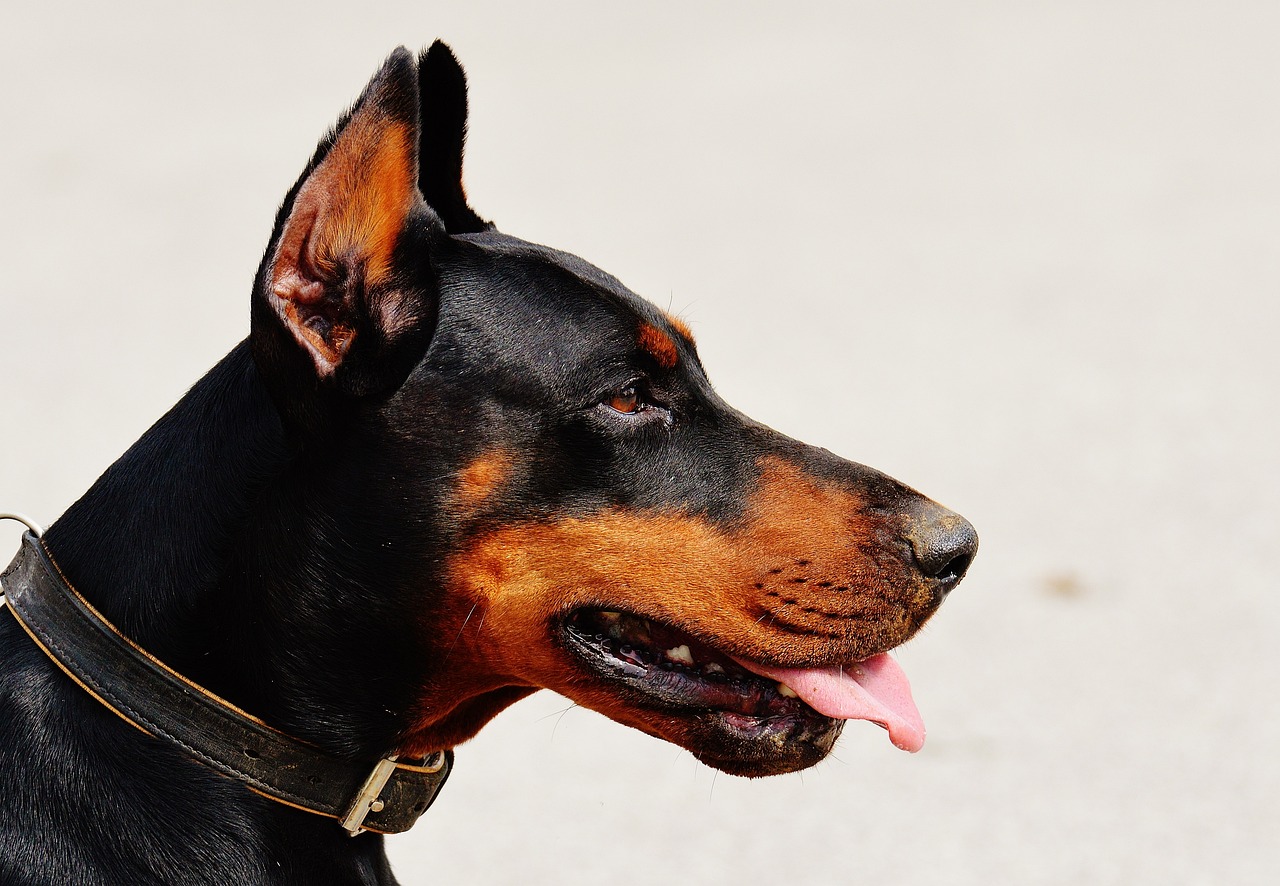The Benefits of Walking Your Dog Regularly
Walking your dog is more than just a daily chore; it's an adventure that brings a multitude of benefits for both you and your furry friend. Imagine stepping outside, the fresh air filling your lungs, and your dog's tail wagging with excitement. This simple act can transform your day and enhance your life in ways you might never have considered. From boosting your physical health to improving your mental well-being, the advantages of regular dog walks are truly remarkable.
First and foremost, walking is an excellent way to maintain physical health. For both humans and dogs, regular exercise is crucial. It promotes cardiovascular fitness, aids in weight management, and increases overall vitality. Think of walking as a two-for-one deal: while you're helping your dog stay fit and healthy, you're also getting a workout yourself. It's a fantastic way to incorporate exercise into your daily routine without even realizing it. Plus, the more you walk, the more energy you both will have, creating a positive feedback loop of health and happiness.
But the benefits don't stop there! Walking your dog also has profound effects on mental well-being. Have you ever noticed how a simple stroll can lift your spirits? When you're out in nature, surrounded by the sights and sounds of the world, stress tends to melt away. This is not just a coincidence; studies show that physical activity releases endorphins, the feel-good hormones that can improve your mood and reduce feelings of anxiety. So, when you grab that leash and head out the door, you're not just exercising your dog; you're also giving yourself a boost of happiness!
Additionally, walking provides an excellent opportunity for social interaction. Whether you're meeting fellow dog owners at the park or simply exchanging friendly nods with neighbors, these interactions can enrich your social life. Dogs are natural icebreakers, making it easier to connect with others and forge new friendships. You might even find that your daily walks become a highlight of your social calendar!
In conclusion, the benefits of walking your dog regularly are vast and varied. From physical health improvements to mental well-being and social connections, this simple activity can significantly enhance your quality of life. So, the next time you grab that leash, remember that you’re embarking on a journey that benefits not just your dog, but you as well. Why not make it a daily ritual? Your body, mind, and social life will thank you for it!
- How often should I walk my dog? - Ideally, you should aim for at least 30 minutes of walking each day, but this can vary based on your dog's breed and energy level.
- What time of day is best for walking? - Morning and evening walks are often best, especially during hot weather, to keep your dog comfortable.
- How can I make walks more enjoyable for my dog? - Vary your routes, bring toys, and allow your dog to explore their surroundings to keep walks exciting.
- What should I do if my dog pulls on the leash? - Consider training techniques to teach your dog proper leash manners, or use a no-pull harness for better control.

Physical Health Benefits
This article explores the numerous benefits of regularly walking your dog, including physical health, mental well-being, social interaction, and the strengthening of the human-animal bond.
When it comes to physical health, walking your dog is like hitting two birds with one stone. Not only does it keep your furry friend fit, but it also significantly improves your own health. Think about it: every time you grab that leash and step outside, you’re engaging in a fun, fulfilling activity that promotes cardiovascular fitness for both you and your pup. Regular walks help to maintain a healthy weight, reduce the risk of chronic diseases, and boost overall vitality.
Let’s break it down a bit more. Walking is a low-impact exercise that can easily fit into your daily routine. It doesn’t require a gym membership, fancy equipment, or even a strict schedule. Just you, your dog, and the great outdoors! The benefits include:
- Improved Heart Health: Regular walking strengthens the heart, lowers blood pressure, and increases circulation.
- Weight Management: Walking helps burn calories and maintain a healthy weight for both you and your dog.
- Enhanced Joint Health: Gentle movement can help keep joints flexible and strong, reducing the risk of arthritis.
- Boosted Immune System: Regular physical activity can enhance your immune function, helping both you and your dog fight off illnesses.
But wait, there’s more! Walking your dog can also lead to improved endurance and energy levels. You might find that the more you walk, the more stamina you build, which can translate into other areas of your life. Whether it's tackling household chores or simply keeping up with your energetic pup, increased energy can make a world of difference.
In addition, the simple act of walking can provide a refreshing break from our often sedentary lifestyles. With the rise of technology, many of us find ourselves glued to screens for hours on end. Walking your dog is a fantastic way to step away from the digital world and reconnect with nature. The fresh air and sunshine can do wonders for your mood and overall well-being.
So, if you’re looking for a way to improve your physical health while deepening your bond with your dog, grab that leash and hit the pavement! It’s a win-win situation that benefits both you and your furry companion.
Walking your dog provides mental stimulation and reduces stress for both the pet and owner. Learn how this simple activity can enhance mood and alleviate anxiety through the power of exercise and fresh air.
Engaging in regular walks can help reduce anxiety levels in both dogs and their owners. Explore techniques to make walks more enjoyable and calming for everyone involved.
Practicing mindfulness while walking can enhance the experience, allowing for a deeper connection with your surroundings and your dog. Discover tips for incorporating mindfulness into your daily routine.
Establishing a consistent walking routine can help manage anxiety levels effectively. Learn how to create a schedule that benefits both you and your dog.
Walking releases endorphins, which can elevate mood and promote happiness. Delve into the science behind exercise and its positive effects on mental health.
Walking your dog opens up opportunities for social interaction with other dog owners and community members. Discover how these interactions can enhance social skills and foster friendships.
Regular walks can help you meet neighbors and build connections within your community. Explore how these relationships can enrich your social life and create a sense of belonging.
Visiting dog parks during walks allows for socialization among dogs and their owners. Learn the benefits of these interactions and how they contribute to a well-rounded social experience.
Q: How often should I walk my dog?
A: Ideally, dogs should be walked at least once a day for 30 minutes, but the frequency and duration can vary based on the dog's breed and energy level.
Q: What are the best times to walk my dog?
A: Early morning or late evening are usually the best times to walk your dog, especially during hot weather, to avoid heat exhaustion.
Q: Can I walk my dog if I have a busy schedule?
A: Absolutely! Even short walks throughout the day can be beneficial. Try to incorporate walks into your daily routine, such as during lunch breaks or after dinner.

Mental Well-Being
This article explores the numerous benefits of regularly walking your dog, including physical health, mental well-being, social interaction, and the strengthening of the human-animal bond.
Regular walks significantly improve both the dog's and owner's physical health, promoting cardiovascular fitness, weight management, and overall vitality. Discover how walking can lead to a healthier lifestyle for both parties.
Walking your dog is not just a routine task; it’s a powerful tool for enhancing mental well-being. Imagine stepping outside, feeling the fresh air on your face, and watching your furry friend wag their tail with excitement. This simple act can lead to profound benefits for both you and your dog. Engaging in regular walks stimulates the mind, reducing stress and anxiety levels. It’s like hitting a reset button on your day. The rhythm of walking can be meditative, allowing both you and your dog to unwind and connect with nature.
Not only does walking provide physical exercise, but it also offers a chance to clear your mind. Think about it: when you walk, you can observe your surroundings, listen to the sounds of nature, and breathe in the fresh air. This sensory experience can help shift your focus away from daily worries. In fact, studies have shown that physical activity, like walking, releases endorphins, the body's natural mood lifters. So, the next time you’re feeling overwhelmed, grab that leash and step outside!
Engaging in regular walks can help reduce anxiety levels in both dogs and their owners. When you and your dog are out and about, you're not just moving; you're exploring the world together. This shared experience can create a sense of safety and security. To make walks more enjoyable and calming, consider the following techniques:
- Choose a peaceful route: Opt for quiet streets or parks where you can enjoy the scenery without distractions.
- Take your time: Don’t rush the walk. Allow your dog to sniff around and take in the environment.
- Practice deep breathing: While walking, take deep breaths to help calm your mind and reduce anxiety.
Practicing mindfulness while walking can enhance the experience, allowing for a deeper connection with your surroundings and your dog. Instead of getting lost in thoughts about the day ahead or the tasks waiting at home, focus on the present moment. Notice the crunch of leaves underfoot, the gentle breeze, and your dog's joyful demeanor. This practice of being present not only enriches your walk but also fosters a stronger bond between you and your furry friend. Here are a few tips for incorporating mindfulness into your daily routine:
- Engage your senses: Pay attention to what you see, hear, and smell during your walk.
- Set an intention: Before you start, think about what you want to achieve during your walk, whether it’s relaxation or connection.
- Limit distractions: Keep your phone away and focus on the experience.
Establishing a consistent walking routine can help manage anxiety levels effectively. Just like any other habit, the more you do it, the easier it becomes. Try to set aside specific times each day for walks. This not only benefits your dog's needs but also creates a sense of structure for you. A routine can provide comfort and predictability, helping to alleviate feelings of anxiety. Start by choosing a time that works best for your schedule and stick to it. Before long, both you and your dog will look forward to those daily adventures!
Walking releases endorphins, which can elevate mood and promote happiness. Delve into the science behind exercise and its positive effects on mental health. The act of walking itself can be invigorating, offering a rush of energy that can transform your day. As you stroll with your dog, you’re not just exercising; you’re also creating joyful memories that can last a lifetime.
Walking your dog opens up opportunities for social interaction with other dog owners and community members. Discover how these interactions can enhance social skills and foster friendships.
Regular walks can help you meet neighbors and build connections within your community. Explore how these relationships can enrich your social life and create a sense of belonging.
Visiting dog parks during walks allows for socialization among dogs and their owners. Learn the benefits of these interactions and how they contribute to a well-rounded social experience.
Q: How often should I walk my dog?
A: Ideally, dogs should be walked at least once a day for 30 minutes, but this can vary based on the dog's breed and energy level.
Q: Can walking really help with my anxiety?
A: Yes! Walking releases endorphins and provides a break from daily stressors, which can significantly help reduce anxiety.
Q: What if my dog doesn’t like to walk?
A: Start with shorter walks and gradually increase the distance. Make it a fun experience with treats and praise.
Reducing Anxiety
When it comes to combating anxiety, few activities are as effective and enjoyable as taking a stroll with your furry friend. Walking your dog not only provides physical exercise but also serves as a natural remedy for stress and anxiety. Just think about it: as you step outside, the fresh air fills your lungs, and the rhythmic sound of your dog’s paws on the pavement creates a soothing backdrop. This simple routine can work wonders for both you and your pet, transforming your mood and outlook on life.
So, how exactly does this work? When you engage in regular walks, your body releases endorphins, those delightful little hormones that make you feel good. They act like nature’s happy pills, reducing feelings of stress and anxiety. For dogs, the act of walking stimulates their senses, allowing them to explore the world around them, which can alleviate their own anxieties. It's a win-win situation!
To make your walks even more enjoyable and calming, consider incorporating a few techniques:
- Choose a Scenic Route: Walking in a tranquil environment can significantly enhance your experience. Parks, nature trails, or quiet neighborhoods can provide a peaceful backdrop that calms both you and your dog.
- Practice Deep Breathing: As you walk, take a moment to focus on your breath. Inhale deeply through your nose, hold for a few seconds, and exhale slowly. This simple practice can ground you, helping to alleviate anxiety.
- Engage with Your Dog: Use this time to connect with your furry companion. Talk to them, play with them, or just enjoy their presence. This connection can be incredibly soothing.
Establishing a walking routine can also be a game-changer in managing anxiety. Think of it as creating a stress-busting ritual that you both look forward to. By setting a specific time each day for your walks, you create a structure that can bring comfort and predictability to your life. This routine not only helps you to manage your anxiety but also gives your dog something to anticipate, enhancing their sense of security.
In essence, walking your dog is more than just a chore; it’s a therapeutic activity that fosters emotional well-being. The bond you share grows stronger with each step, and the benefits extend far beyond the physical. So, grab that leash, step outside, and let the worries of the day melt away as you and your furry friend embark on a journey of relaxation and joy.
Q1: How often should I walk my dog to reduce anxiety?
A: Ideally, aim for at least 30 minutes of walking each day. However, the frequency can vary based on your dog's breed, age, and energy level.
Q2: Can walking my dog help with my anxiety?
A: Absolutely! Regular walks can boost your mood, reduce stress, and create a calming routine for both you and your dog.
Q3: What if my dog is anxious during walks?
A: Start with shorter walks in familiar environments and gradually increase the duration and explore new areas. Use positive reinforcement to encourage calm behavior.
Mindfulness During Walks
When you step outside with your furry friend, it’s easy to get lost in the hustle and bustle of the world around you. The ringing of phones, the chatter of people, and the rush of cars can all create a chaotic backdrop that distracts from the simple joy of walking your dog. However, incorporating mindfulness into your walks can transform this routine into a deeply enriching experience for both you and your pet. Mindfulness is all about being present in the moment, and what better way to practice it than during a leisurely stroll with your dog?
Imagine this: as you walk, you take a moment to notice the way the sunlight filters through the leaves, casting playful shadows on the ground. You can feel the cool breeze against your skin and hear the gentle rustle of grass underfoot. This sensory awareness not only enhances your connection with nature but also allows you to bond more deeply with your dog. Mindfulness during walks can help you appreciate the little things that often go unnoticed, turning an ordinary outing into a delightful adventure.
To cultivate mindfulness while walking, try these simple techniques:
- Focus on Your Breath: Pay attention to your breathing. Inhale deeply through your nose, hold for a moment, and exhale slowly. This can help ground you in the present.
- Engage Your Senses: Take a moment to notice the sights, sounds, and smells around you. Is there a new flower blooming? Can you hear birds chirping? This sensory engagement can enhance your experience.
- Connect with Your Dog: Observe your dog’s behavior. Notice how they interact with their environment. Are they excited by a particular smell? Are they happy to see another dog? This connection can deepen your bond.
By practicing mindfulness, you not only enrich your own experience but also create a calming atmosphere for your dog. Dogs are incredibly intuitive creatures; they can sense your emotions and energy levels. When you are calm and present, it reflects in your dog's demeanor, making the walk more enjoyable for both of you.
Consider setting aside a few minutes before each walk to center yourself. You might sit quietly for a moment, focusing on your breath and letting go of the stresses of the day. This practice can help you start your walk with a clear mind and an open heart. Moreover, as you walk, try to maintain this sense of presence. If your mind starts to wander, gently bring your focus back to the sights and sounds around you.
Incorporating mindfulness into your walking routine can also pave the way for a more structured approach to your walks. You might find that by being more aware, you naturally begin to establish a rhythm that suits both you and your dog. Whether it's a brisk pace or a leisurely stroll, this routine can foster a sense of comfort and predictability, which is beneficial for managing anxiety levels.
So, the next time you grab the leash and head out the door, remember that walking your dog can be more than just exercise; it can be a meditative practice that enhances your overall well-being. By embracing the moment and immersing yourself in the experience, you not only nurture your own mental health but also strengthen the bond you share with your beloved pet.
Q: How can I practice mindfulness while walking my dog?
A: Focus on your breath, engage your senses, and connect with your dog. Pay attention to your surroundings and be present in the moment.
Q: What are the benefits of mindfulness during dog walks?
A: Mindfulness can reduce stress, enhance your mood, and strengthen the bond with your dog. It transforms a routine walk into a more enjoyable experience.
Q: Can mindfulness help with my dog's anxiety during walks?
A: Yes! A calm and present owner can help soothe a dog’s anxiety, making walks more enjoyable for both of you.
Creating a Routine
Establishing a consistent walking routine is not just beneficial; it's essential for both you and your furry friend. Think of it as a daily ritual that can transform your lives. Just like humans thrive on structure, dogs feel more secure and content when they know what to expect. Imagine how you feel when you wake up each day knowing exactly what your schedule holds—it's comforting, right? Well, the same goes for your dog!
So, how do you create this magical routine? Start by choosing a time that works for both of you. Whether it’s early morning before the world wakes up or a leisurely evening stroll, find a slot that fits seamlessly into your lifestyle. Consistency is key! Dogs are creatures of habit, and they will quickly learn to anticipate their daily walks. This anticipation can reduce anxiety and help them feel more relaxed throughout the day.
Next, consider the duration and distance of your walks. You don’t need to be training for a marathon; even a 15 to 30-minute walk can do wonders. Adjust the length based on your dog’s age, breed, and energy level. For example, a high-energy breed like a Border Collie might need longer walks compared to a more laid-back Bulldog. It's all about finding that sweet spot that keeps both of you engaged and happy.
To make the routine even more exciting, you could mix it up! Explore different routes in your neighborhood or visit nearby parks. This not only keeps things fresh but also provides your dog with new scents and sights to stimulate their senses. Think of every walk as a mini-adventure waiting to unfold. And don’t forget to set aside time for play! Incorporating some fetch or tug-of-war after your walk can enhance the experience and strengthen your bond.
Lastly, track your progress. You can use apps or a simple journal to note down your walks, the distances covered, and how both you and your dog felt during and after the exercise. This can help you stay motivated and make adjustments as needed. Plus, it’s a great way to reflect on the joy these walks bring into your lives.
- How often should I walk my dog? Ideally, dogs should be walked at least once a day, but this can vary based on their energy levels and breed.
- What if my dog doesn’t like walking? Start slow! Gradually introduce them to walks and consider using treats to encourage them.
- Can I walk my dog at night? Yes, just ensure you have proper lighting and are aware of your surroundings.
- What should I bring on our walks? Always carry water for both you and your dog, some waste bags, and perhaps a toy for playtime.
Boosting Happiness
Have you ever noticed how a simple walk can lift your spirits? Walking your dog is not just a chore; it's a little slice of joy packed with benefits! When you step outside with your furry friend, you're not only getting fresh air and exercise, but you're also engaging in an activity that releases those magical little chemicals known as endorphins. These endorphins are your body's natural mood lifters, and they kick into high gear during physical activity. So, every step you take alongside your pup is a step towards a happier you!
But wait, there's more! The happiness boost from walking your dog isn't just about the exercise. It's about the connection you build with your pet as well. Dogs are incredibly intuitive creatures; they can sense your mood and respond accordingly. When you’re out walking, your dog is not just getting a workout—they're also soaking in the sights, sounds, and smells of the world around them, which can be contagious! Their excitement can uplift your mood, making the walk feel less like a task and more like a shared adventure.
To illustrate just how beneficial these walks can be, let’s take a look at some key points:
| Benefit | Description |
|---|---|
| Endorphin Release | Physical activity stimulates the release of endorphins, which are known to enhance mood. |
| Bonding Time | Walking together strengthens the bond between you and your dog, enhancing emotional well-being. |
| Exposure to Nature | Being outdoors and surrounded by nature has been shown to reduce stress and improve happiness. |
Moreover, consider how walking your dog can lead to spontaneous moments of joy. Whether it's a playful romp in the park or a chance encounter with another dog owner, these little interactions can brighten your day. Dogs have a unique way of bringing people together. You might find yourself chatting with a neighbor or even making a new friend while your dogs play together. It's like an instant community builder!
So, the next time you lace up your shoes and grab that leash, remember that you're not just doing it for your dog's health. You're also investing in your own happiness. Each walk is a chance to embrace the world around you, share moments of joy with your furry companion, and boost your overall well-being. It’s a win-win situation that can turn an ordinary day into an extraordinary one!
- How often should I walk my dog? Ideally, dogs should be walked at least once a day for at least 30 minutes, but this can vary based on your dog's breed and energy level.
- What are the best times to walk my dog? Early mornings or late afternoons are usually cooler and more comfortable, but you can walk your dog any time that fits your schedule.
- Can walking my dog help with behavioral issues? Yes! Regular walks can help reduce anxiety and excess energy, leading to better behavior overall.

Social Interaction
Walking your dog isn't just about keeping them fit; it’s also a fantastic way to enhance your own social life! When you step out with your furry friend, you're likely to encounter other dog owners, neighbors, and community members. This simple act of walking can open the door to countless social interactions that might not happen otherwise. Imagine this: you're strolling down the street, and suddenly, you spot another dog owner. A friendly exchange about your dogs can lead to a deeper conversation, and before you know it, you’ve made a new friend. It’s like a secret club that only dog owners are a part of!
Moreover, these interactions can significantly enhance your social skills. Engaging in conversations while walking your dog can help you practice communication in a relaxed setting. You can share tips, discuss dog care, or even plan playdates for your pets. The beauty of these interactions is that they are often casual and low-pressure, making it easier for you to connect with others. The next thing you know, you’re not just walking your dog; you’re building a network of friends who share similar interests.
In addition to meeting new people, regular walks can help strengthen existing relationships. When you invite friends or family to join you on a dog walk, it creates an opportunity for bonding. You can share stories, laugh, and enjoy the fresh air together. It’s a win-win situation: your dog gets to socialize, and you get to deepen your connections with others.
Another great aspect of walking your dog is that it often leads you to local parks or community events where dog owners gather. These places are gold mines for social interaction! Whether it’s a dog park, a pet-friendly café, or a local event, you’ll find plenty of opportunities to meet like-minded individuals. Plus, it’s a wonderful way to support your community and engage in local happenings.
| Benefits of Social Interaction While Walking | Examples |
|---|---|
| Improved Communication Skills | Engaging in conversations with other dog owners |
| Building Friendships | Making plans for dog playdates |
| Strengthening Community Ties | Participating in local dog events or meet-ups |
| Shared Experiences | Exchanging tips on dog care and training |
In summary, walking your dog is so much more than just exercise; it’s a gateway to social interaction and community building. So, the next time you grab the leash, remember that you’re not just taking your dog for a stroll. You’re stepping into a world full of opportunities to connect, share, and grow. Why not make it a point to engage with others during your walks? You might just find that the best part of your day is the conversations you have along the way!
- How often should I walk my dog? - Aim for at least 30 minutes to an hour daily, depending on your dog's breed and energy level.
- What if my dog is shy around other dogs? - Gradually introduce them to other dogs and consider visiting quieter areas to build their confidence.
- Can I walk my dog in the rain? - Yes! Just make sure to have a raincoat for yourself and a waterproof jacket for your dog if they're comfortable in one.
- What are some tips for making dog walks more enjoyable? - Change your route often, bring treats, and allow your dog to explore new scents!
Building Community Connections
Walking your dog is more than just a daily chore; it’s a fantastic way to forge connections within your community. Imagine this: you step outside with your furry friend, and suddenly, the world opens up. You’re not just walking down the street; you’re entering a vibrant tapestry of interactions that can lead to lasting friendships. Think about how many times you’ve seen another dog owner and exchanged a smile or a friendly nod. Those moments can blossom into deeper conversations, and before you know it, you’re discussing everything from dog training tips to local events.
Regular walks can help you meet your neighbors and create a sense of belonging. When you and your dog become a familiar sight in your neighborhood, people start to recognize you. This recognition can lead to casual chats that evolve into meaningful relationships. You might find yourself sharing stories about your pets, discovering common interests, or even organizing playdates for your dogs. It’s amazing how a simple walk can break down barriers and create community ties.
Moreover, dog parks are a treasure trove for socialization. When you visit a dog park, you’re not just letting your pup run free; you’re stepping into a social hub where dog lovers congregate. Here, you can engage in conversations with other dog owners, share advice, or even plan group outings. These interactions can enhance your social skills and contribute to a well-rounded social experience. Plus, the joy of watching your dogs play together can be a bonding experience in itself!
To illustrate the impact of walking on community connections, consider the following table that highlights the benefits:
| Benefit | Description |
|---|---|
| Increased Visibility | Regular walks make you a familiar face in the neighborhood, fostering recognition and connection. |
| Shared Interests | Conversations with fellow dog owners often lead to discovering common hobbies and interests. |
| Community Events | Dog walking can introduce you to local events, meetups, and social gatherings. |
| Support Networks | Building relationships with other dog owners can create a network for sharing advice and support. |
In conclusion, walking your dog is a gateway to building community connections. It’s not just about exercise; it’s about creating a network of friends and acquaintances that can enrich your life and your dog’s life. So, the next time you grab that leash, remember that you’re not just going for a walk; you’re embarking on a journey of connection and community.
Q: How often should I walk my dog to build community connections?
A: Aim for daily walks if possible. The more consistent you are, the more likely you are to meet fellow dog owners.
Q: What should I do if I’m shy about talking to other dog owners?
A: Start with a smile or a wave. Often, a simple gesture can open the door to conversation.
Q: Are there specific dog parks that are better for socializing?
A: Look for parks that are popular with dog owners, as they tend to have a more social atmosphere.
Q: Can walking my dog help me meet people in my neighborhood?
A: Absolutely! Regular walks can make you a familiar face, leading to spontaneous interactions with neighbors.
Dog Parks and Socialization
Dog parks are more than just green spaces; they are vibrant communities where dogs and their owners come together to socialize, play, and connect. Imagine a lively atmosphere filled with wagging tails and happy barks, where your furry friend can frolic freely while you engage with fellow dog lovers. These parks serve as a fantastic venue for both socialization and exercise, creating an enriching experience for both you and your pet. But what makes dog parks so special?
First and foremost, dog parks provide a safe and controlled environment for dogs to interact with one another. Socialization is crucial for a dog’s development, as it teaches them how to communicate and behave around other animals. When dogs play together, they learn important skills such as sharing, taking turns, and understanding social cues. This not only makes them well-rounded pets but also contributes to their overall happiness and well-being. As a dog owner, witnessing your pet’s joy as they romp around with friends can be incredibly rewarding.
Moreover, dog parks offer a unique opportunity for owners to connect with each other. Have you ever struck up a conversation with a stranger because your dogs were playing together? It’s a common occurrence! These interactions can lead to lasting friendships, as you bond over shared experiences and tips for dog care. In fact, many dog owners find that their social circles expand significantly after frequent visits to local parks. It’s a beautiful reminder that our pets can help us forge connections with others.
However, it’s essential to remember that not all dog parks are created equal. Some parks might be better suited for small dogs, while others cater to larger breeds. Before heading out, consider the following factors:
- Park Size: Ensure the park is spacious enough for your dog to run and play without feeling cramped.
- Fencing: A secure fence is crucial for keeping your dog safe and preventing them from wandering off.
- Rules and Regulations: Familiarize yourself with the park’s guidelines to ensure a positive experience for everyone.
- Cleanliness: A well-maintained park reflects a community that cares for its environment and the pets that use it.
In addition to socialization, dog parks can also serve as a training ground for your pet. Many parks host events or classes that focus on obedience training and social skills, providing a structured environment for learning. Participating in these activities not only enhances your dog’s behavior but also strengthens the bond between you and your furry companion. Plus, it’s a fantastic way to meet other pet owners who are equally invested in their dogs’ well-being.
Ultimately, the benefits of visiting dog parks extend beyond just physical exercise. They promote mental stimulation, social interaction, and community building. So, the next time you grab your leash and head out the door, consider making a stop at your local dog park. Your pup will thank you with wagging tails and joyful barks, while you might just find your new best friend among fellow dog owners.
1. How often should I take my dog to the dog park?
Most dogs benefit from regular visits to the dog park, ideally a few times a week, depending on their energy levels and social needs.
2. What should I bring to the dog park?
It’s a good idea to bring water, poop bags, and a few toys to keep your dog entertained and hydrated during playtime.
3. How do I know if my dog is ready for the dog park?
If your dog is well-socialized, up-to-date on vaccinations, and enjoys being around other dogs, they are likely ready for the dog park experience.
4. What if my dog doesn’t get along with other dogs?
If your dog shows signs of aggression or fear towards other dogs, it may be best to avoid dog parks and seek alternative socialization methods, such as one-on-one playdates.
Frequently Asked Questions
- How often should I walk my dog?
It's generally recommended to walk your dog at least once a day for about 30 minutes. However, the frequency and duration can vary based on your dog's breed, age, and energy level. Some dogs may benefit from multiple shorter walks, while others might enjoy a longer stroll less frequently. Just remember, consistency is key!
- What are the health benefits of walking my dog?
Walking your dog regularly can significantly improve both your physical health and your dog's. It promotes cardiovascular fitness, helps maintain a healthy weight, and boosts overall vitality. Plus, it's a fantastic way to bond with your furry friend while keeping both of you active and healthy!
- Can walking my dog help with my anxiety?
Absolutely! Engaging in regular walks can be a great way to reduce anxiety levels for both you and your dog. The combination of physical activity, fresh air, and the calming presence of your pet can work wonders for your mental well-being. It’s like a little therapy session on four legs!
- What if my dog is not social with other dogs?
If your dog is not very social, that's okay! You can still enjoy walks without forcing interactions. Start with quieter times at the park or choose less crowded routes. Gradually introducing your dog to other dogs in a controlled environment can help them become more comfortable over time.
- How can I make walks more enjoyable for my dog?
To make walks more enjoyable, consider varying your routes to keep things interesting. Bring along some toys for playtime breaks, and allow your dog to sniff around and explore. Remember, it's not just exercise; it's their chance to experience the world!
- What should I do if my dog pulls on the leash?
If your dog tends to pull on the leash, consider using a harness designed to discourage pulling. Training techniques, like rewarding them for walking beside you, can also help. Patience and consistency are crucial here, but with time, you can teach your dog to walk nicely on a leash.
- Are there specific times that are better for walking my dog?
Yes, walking your dog during cooler parts of the day, like early morning or late evening, can be more comfortable for both of you, especially during hot weather. Avoid the peak heat of midday, as it can be tough on your dog's paws and overall comfort.



















